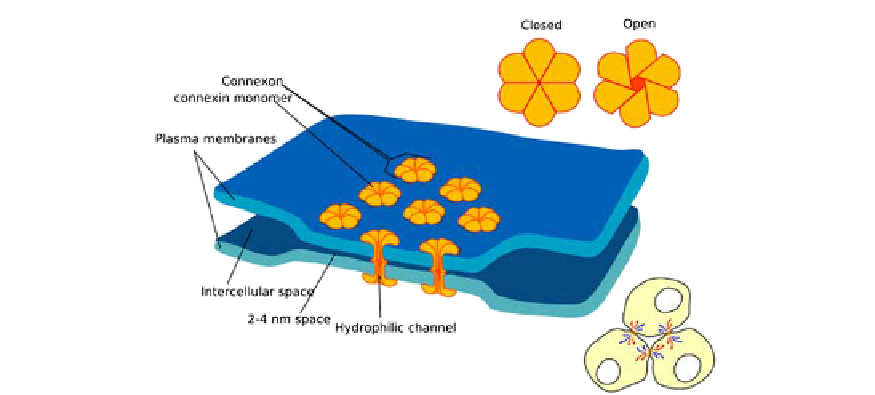Biology Reference
In-Depth Information
FIGURE 11.6
Schematic drawing of a field of gap junctions
[57]
.
called a connexin (
Figure 11.6
). Since connexins come in about 15 different types, small vari-
ations in connexon structure are known. Each connexon spans the plasma membrane and
protrudes into the gap between the cells where it connects to the protruded connexon of
an adjacent cell, thus forming a completed channel. The channel is only about 3 nm in diam-
eter at its narrowest, thus limiting the size of transported solutes. Gap junctions can be
a single connexon or may be found in a field of hundreds or thousands of adjacent connexons
called a plaque. Gap junctions are especially abundant in muscle and nerve that require rapid
intracellular communication. Gap junction defects have been linked to certain congenital
heart defects and deafness.
George Palade (
Figure 11.7
) is perhaps the most accomplished cell biologist of all time. As
an electron microscopist, he was involved in identifying and describing many cell structures
including gap junctions and Golgi apparatus. In 1974 he shared the Nobel Prize in Physi-
ology and Medicine with Albert Claude and Christian de Duve 'for discoveries concerning
the functional organization of the cell that were seminal events in the development of
modern cell biology.'
FIGURE 11.7
George Palade (1912
e
2008). Courtesy of UC San Diego School of Medicine Cellular and Molecular
Medicine Department.


